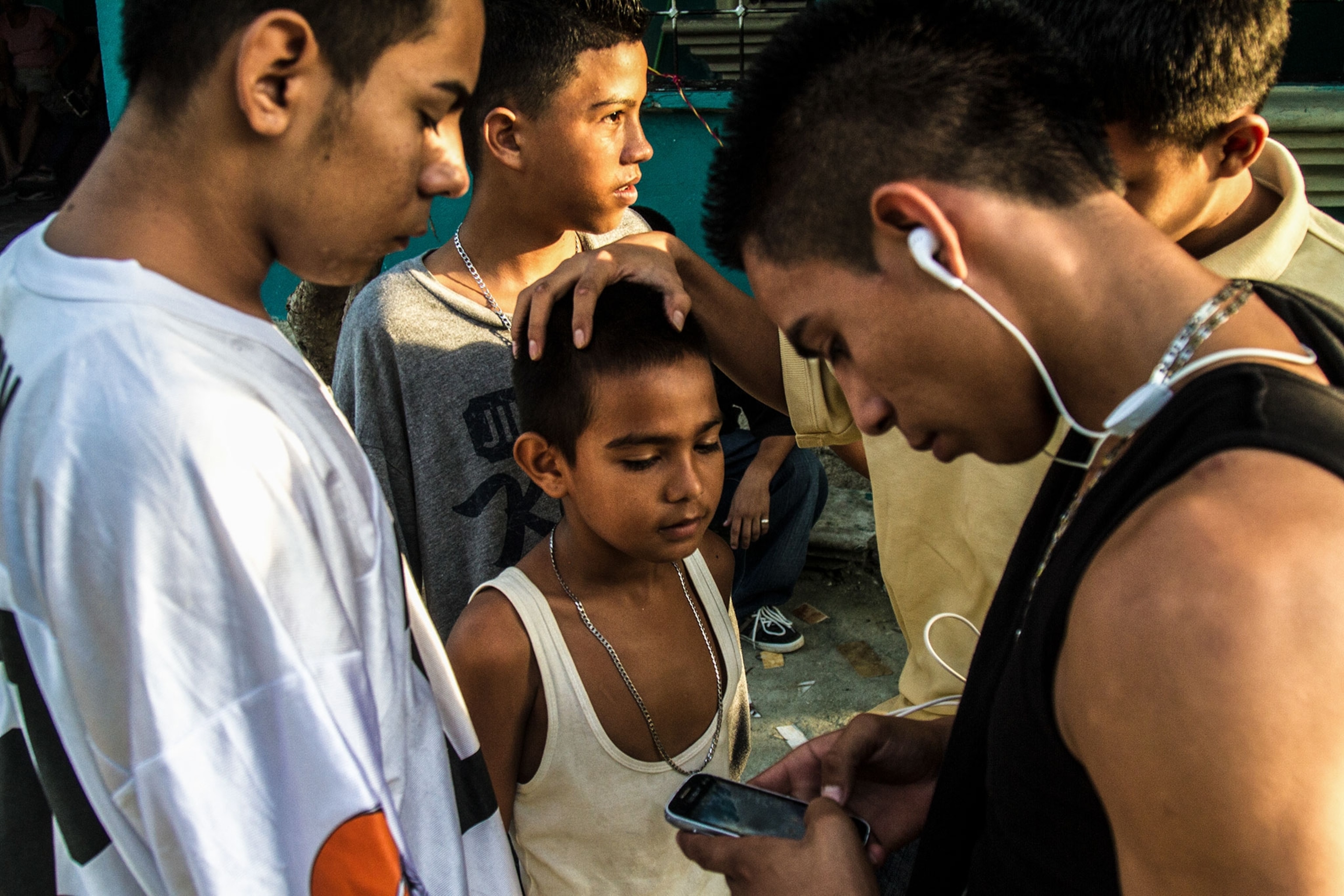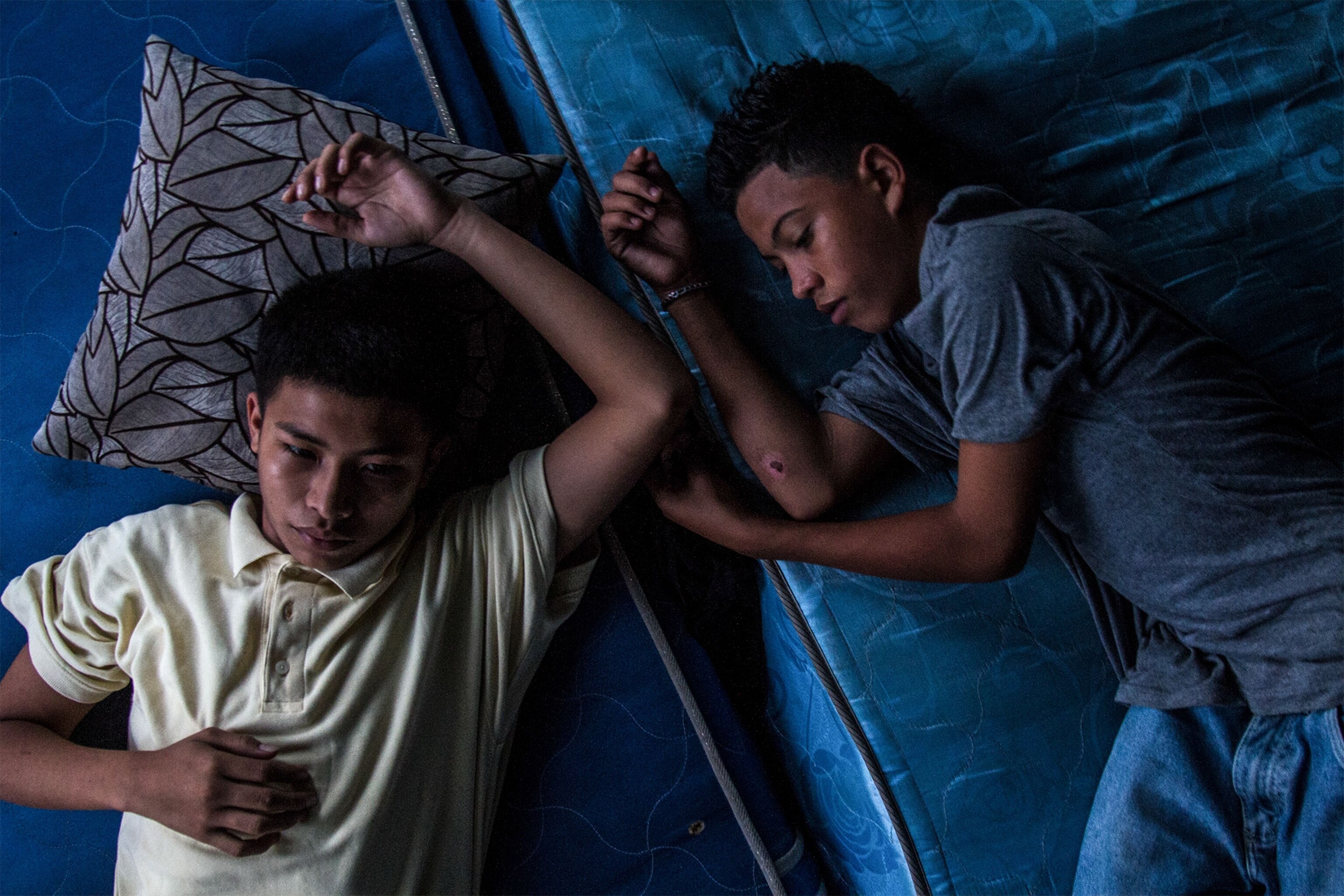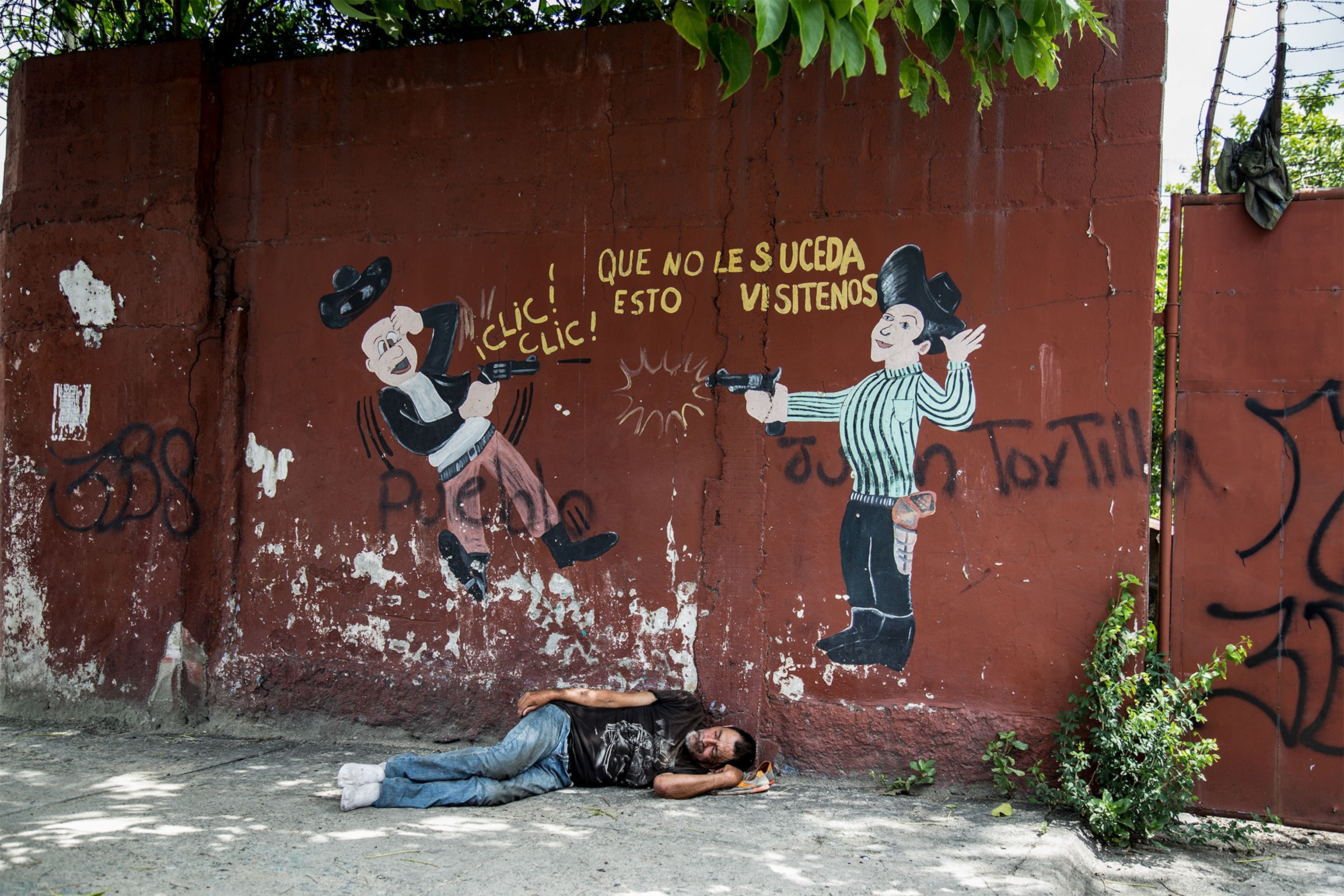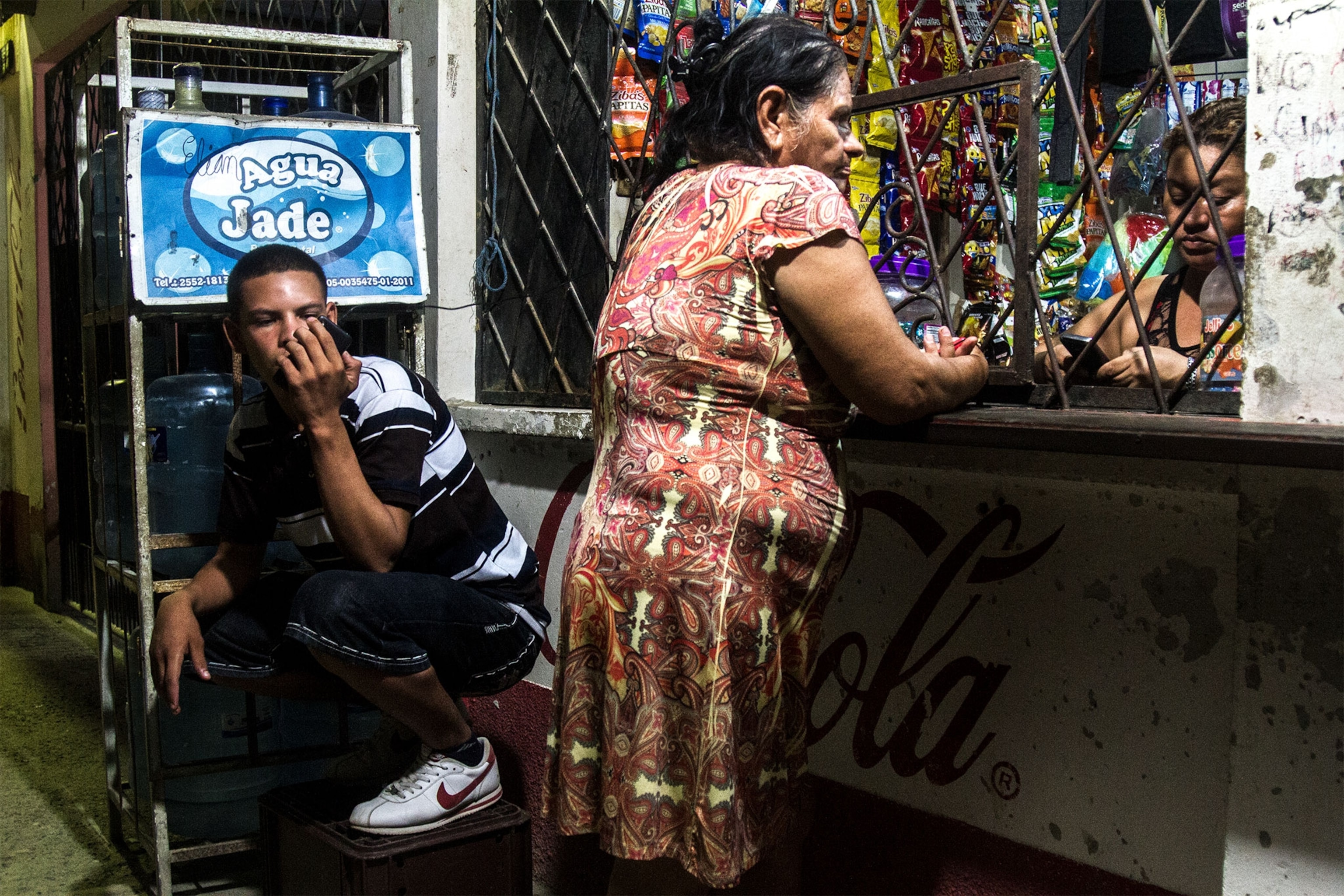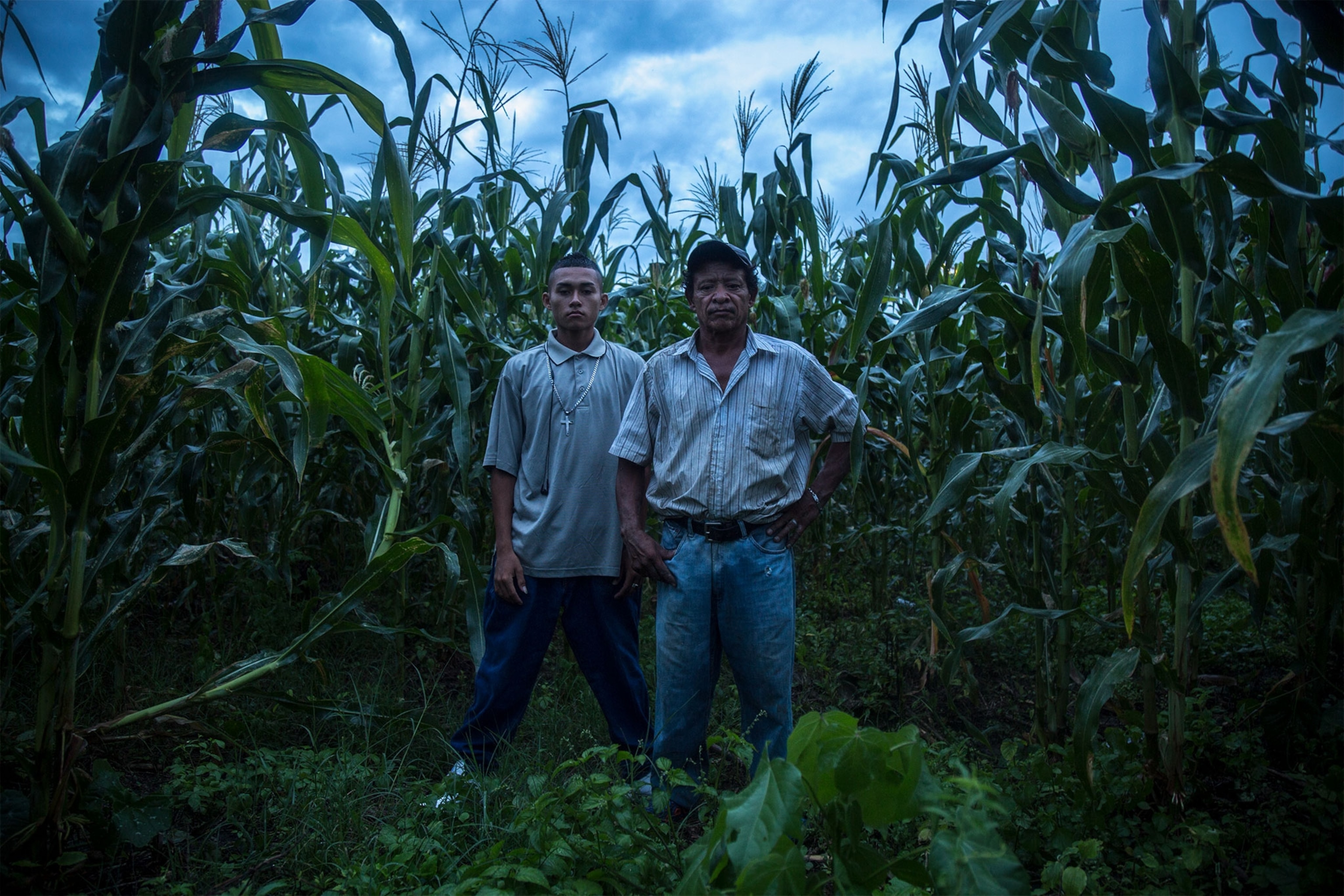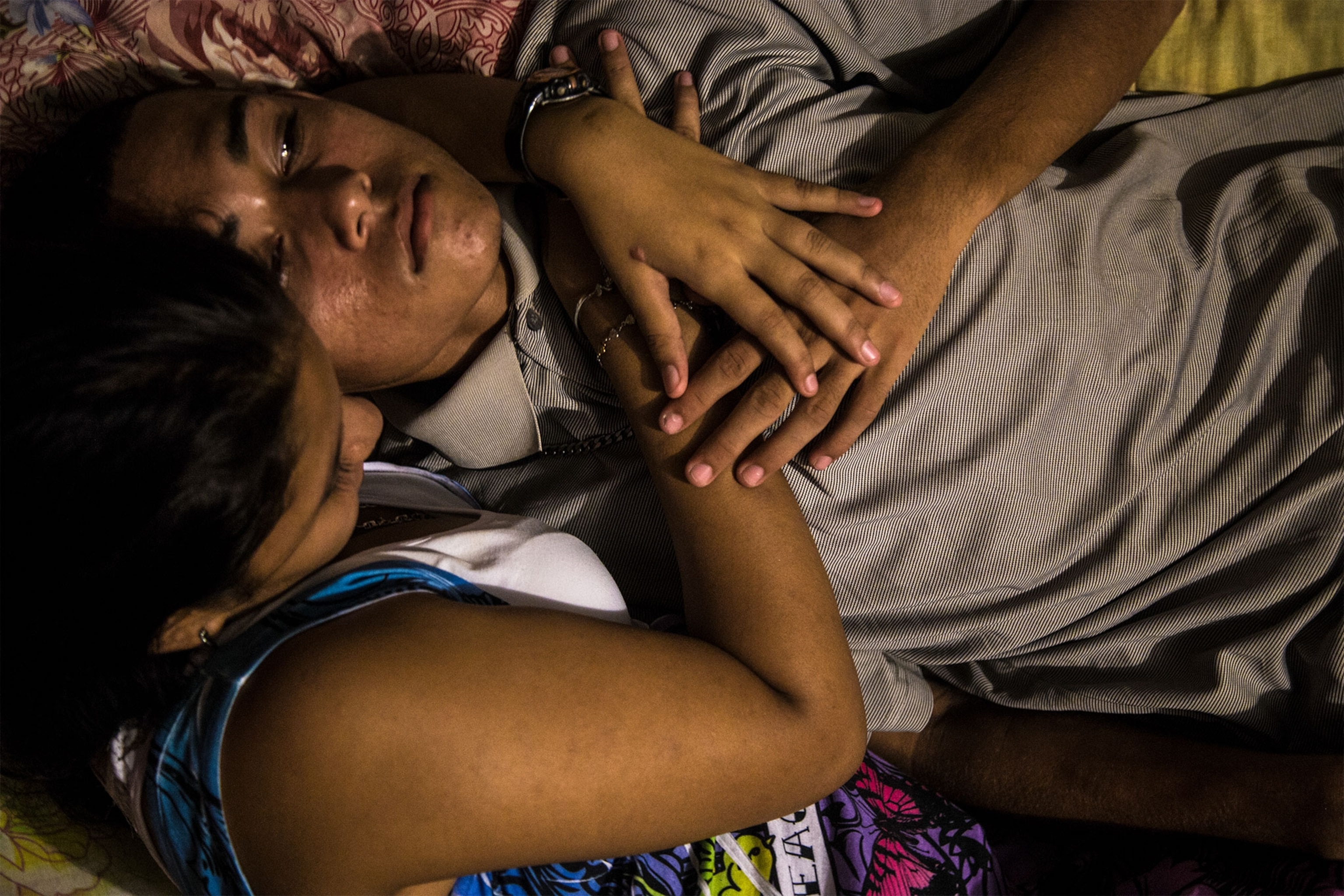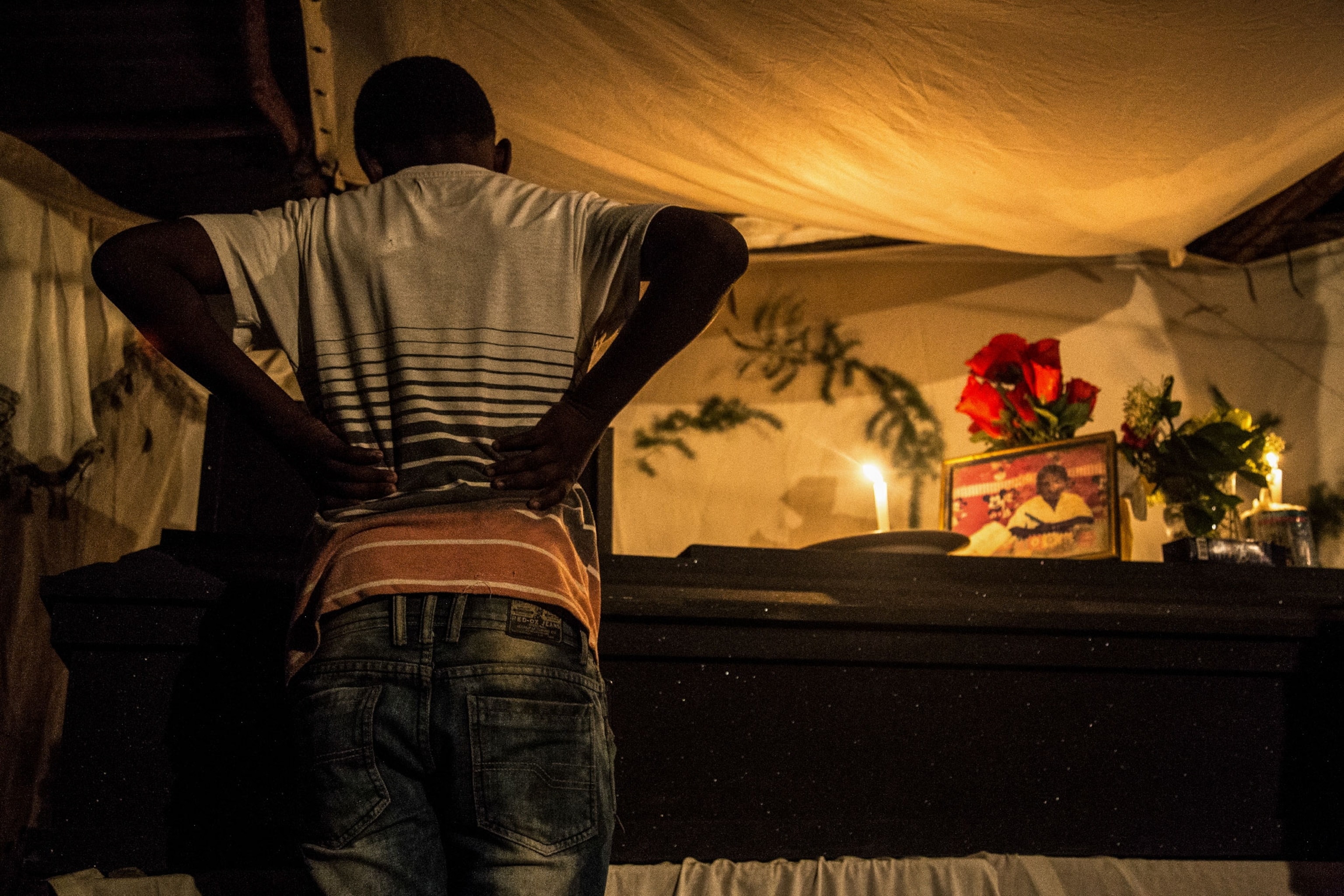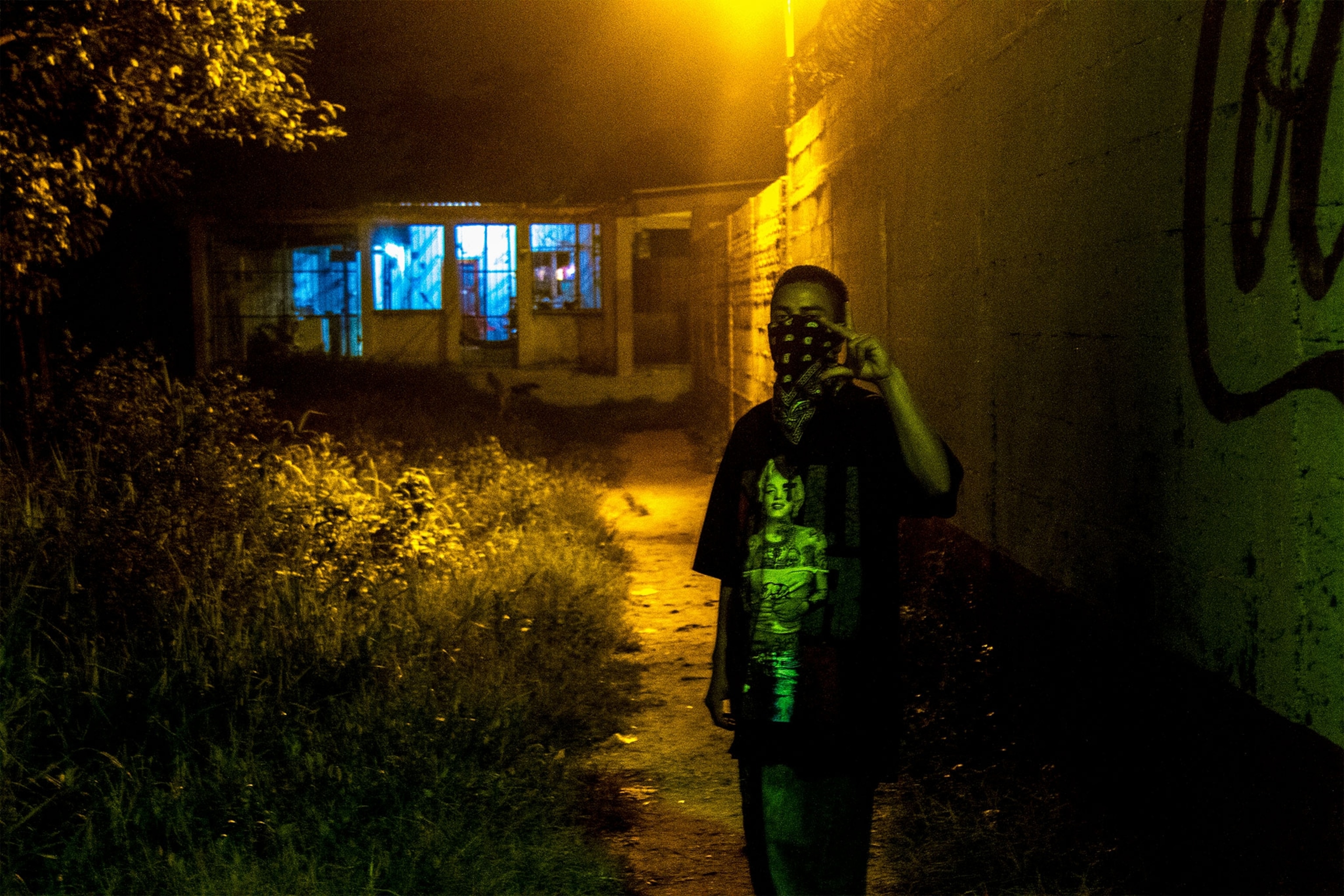
In Gang-Ridden Honduras, Growing Old is a Privilege, Not a Right
Caught up in the cycle of violence, corruption and poverty, young people in Honduras are literally fighting for survival.
At the edge of San Pedro Sula, a city in northern Honduras surrounded by swamps and sugar cane fields, lies the densely populated district of Planeta. Here, church steeples dot the corners of unpaved streets amid a patchwork of gang turfs—one block may be governed by one gang and the next three by their rivals. Masked police officers patrol the streets in dust-covered body armor, their fingers on the trigger of their weapon. There are no schools and few businesses so residents have no choice but to navigate these territories on their long commutes to more affluent parts of the city, risking being caught in the crossfire.
It’s in places like this where generations of young people have realized that in Honduras the self-perpetuating cycles of violence, corruption, and poverty have robbed them of their right to grow old.
I arrived here to continue a project I had begun in 2015 documenting the mass migration of Hondurans making the perilous journey towards the United States. Time and time again, fleeing Honduran families explained in harrowing detail the precise moment when life in the country was no longer an option: An imminent threat against their lives at the whim of a dominant gang, a workplace shuttered by impossible extortion quotas imposed by sicarios, or simply being run out by the persistent crossfire in the city peripheries.
I wanted to better understand the factors at play, so I headed to the source of the exodus. Before arriving in Planeta, I assumed the district was going to be ruled with an iron fist by ruthless criminals. Instead I found locals living in a tenuous state of calm alongside gang enforcers who were their neighbors, sons, and cousins.
Most of the gang members I met were under the age of 16 and their lives had already had been marked by violence. They told stories of facing off against rivals to defend their turf. A recent gang incursion had left six teens dead, their bodies found in a stream, cut into pieces.
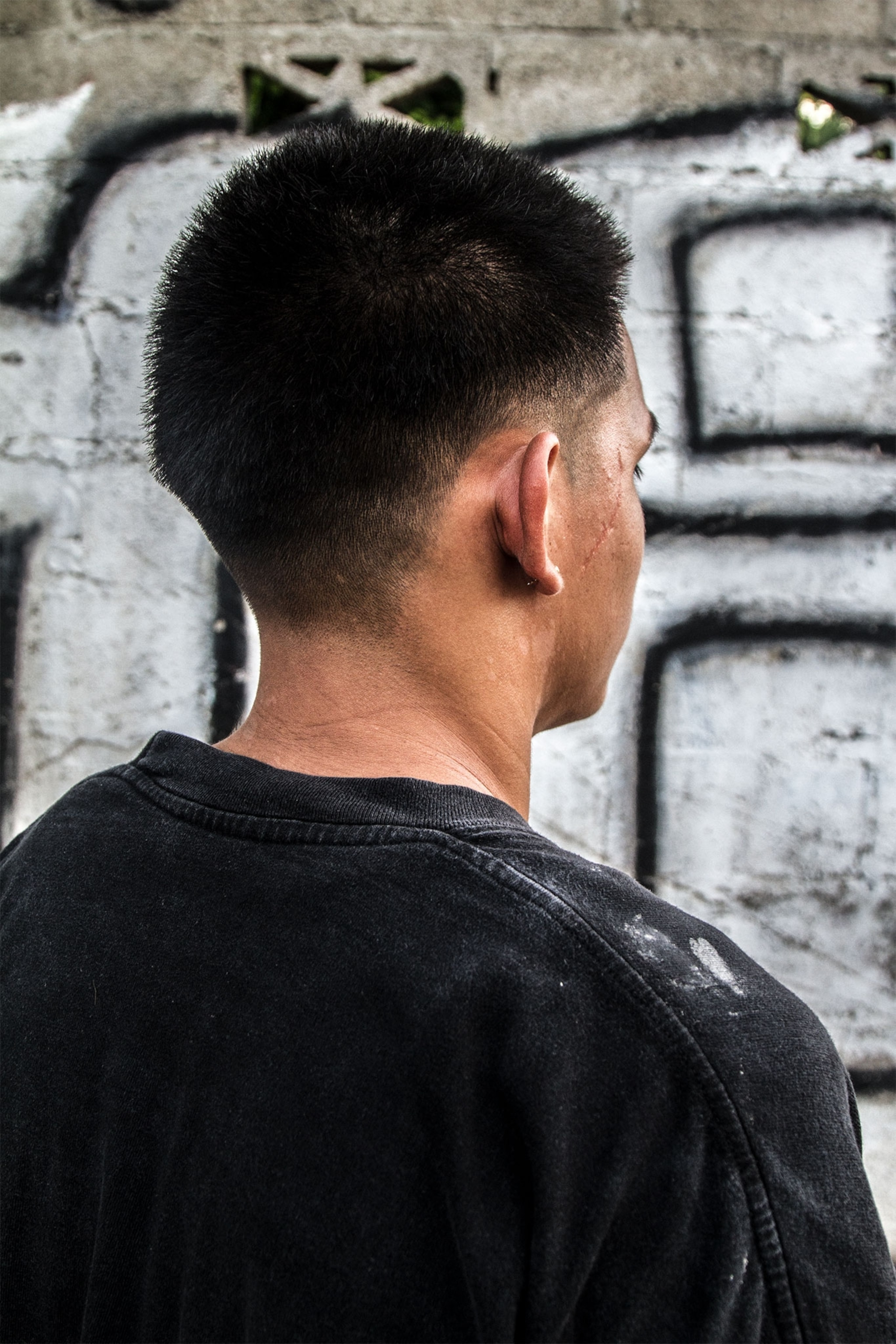
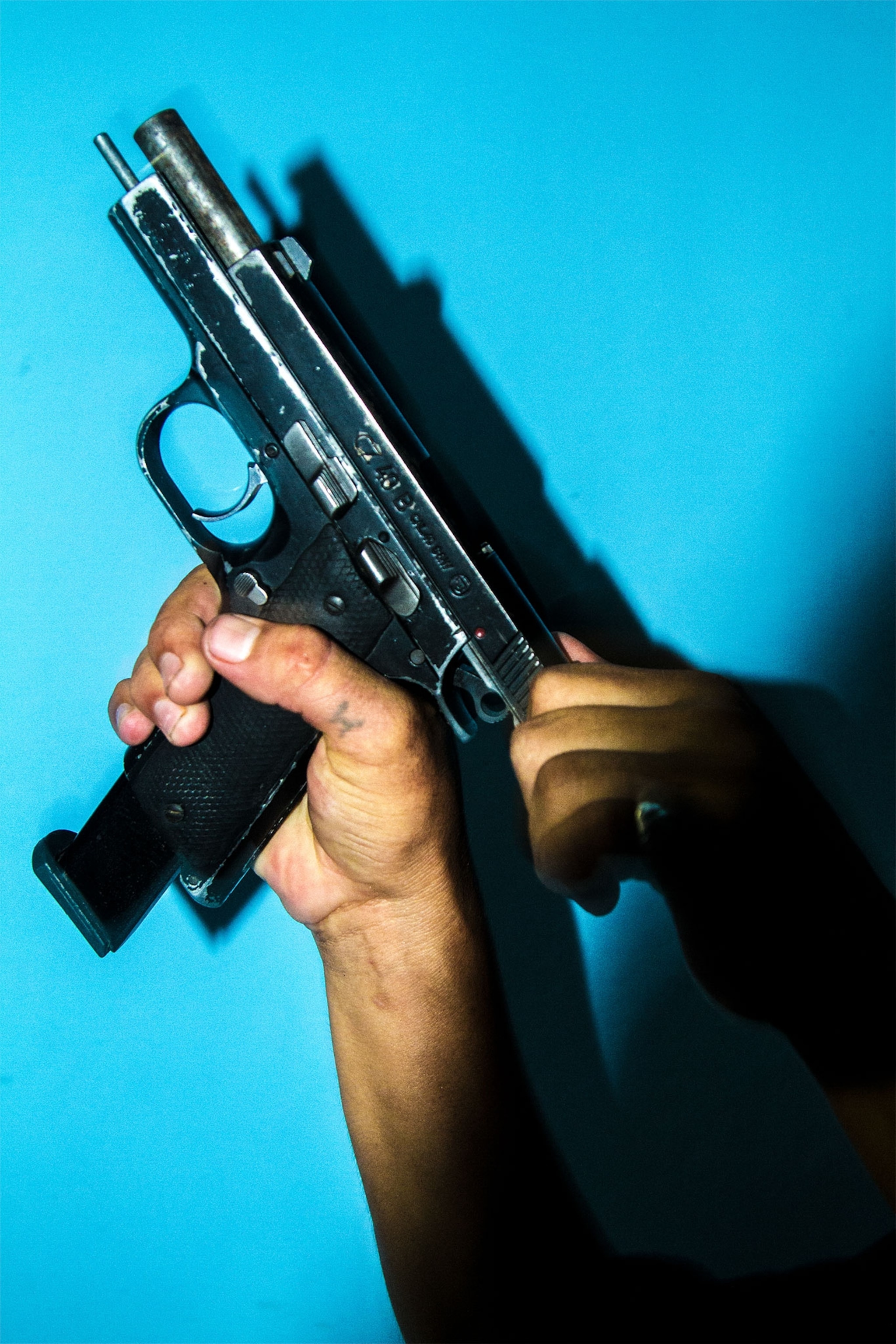
I met one gang member who had been orphaned as a child after masked men abducted his mother. I asked who took care of him growing up. No one, he said. His grandmother spared food whenever she could, but other than that, he scavenged on these streets on his own until the gang took him in. He was now only known by his gang name, Furia.
Most of all, I was struck by Moises, who was barely 17. We connected instantly. Once we earned each other’s trust, we hiked up the barren hill in the middle of the neighborhood. Away from the noisy streets, he shared the crisis keeping him up at night. Moises was being persuaded to join the gang his childhood friends had been a part of since they were 10. He wouldn’t ever consider it, he said, if it weren’t for the years of being brutalized by police and barely surviving near misses with neighboring gangs. Joining, he thought, might just be a way to survive.
His parents, former farmers who moved to the city in hopes of a better life for their children, were urging him to leave the country for a chance at a life— any life— abroad. But Moises was torn. His girlfriend, only 16, recently surprised him with news that he was going to be a father.
Tomás Ayuso is a Honduran documentary photojournalist and writer. He was the winner of the portfolio review and National Geographic grant recipient at this year's Festival Errante, held in Montevideo, Uruguay.
